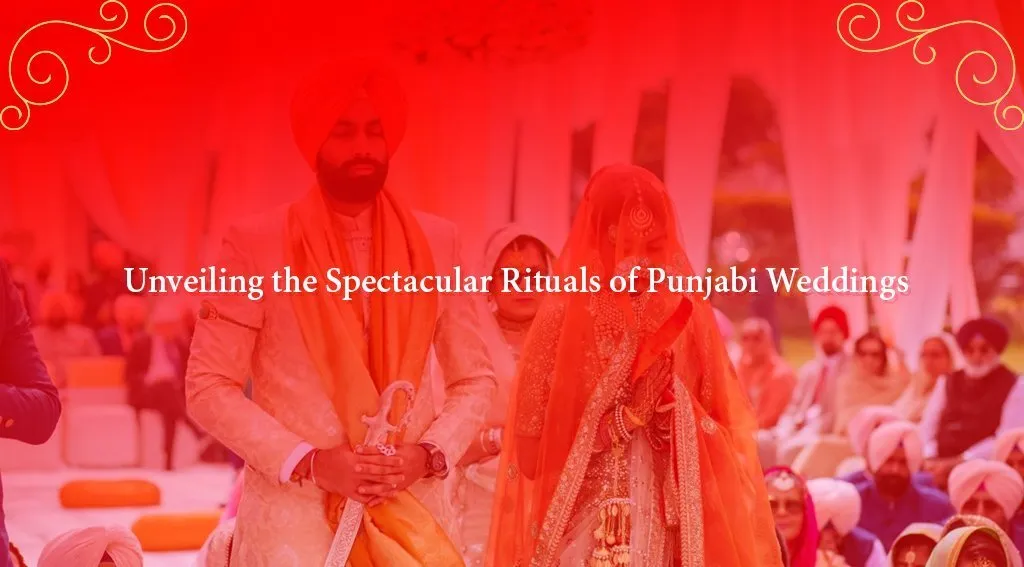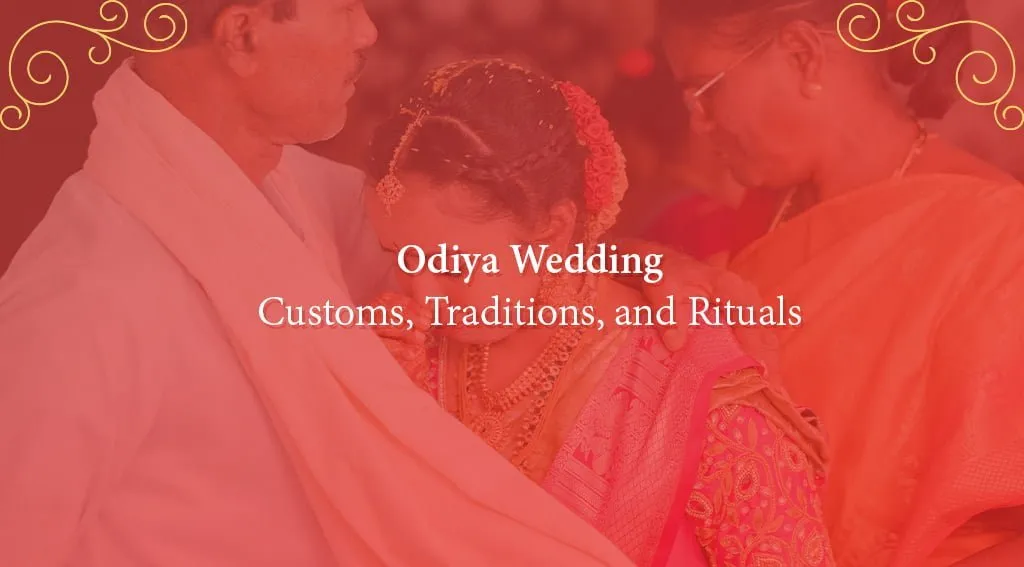Maharashtrian weddings are a delightful fusion of rich traditions and heartfelt celebrations that reflect the true essence of Maharashtra’s cultural heritage. From the pre-wedding rituals to the grand wedding ceremony and the post-wedding customs, each step is brimming with joy and significance.
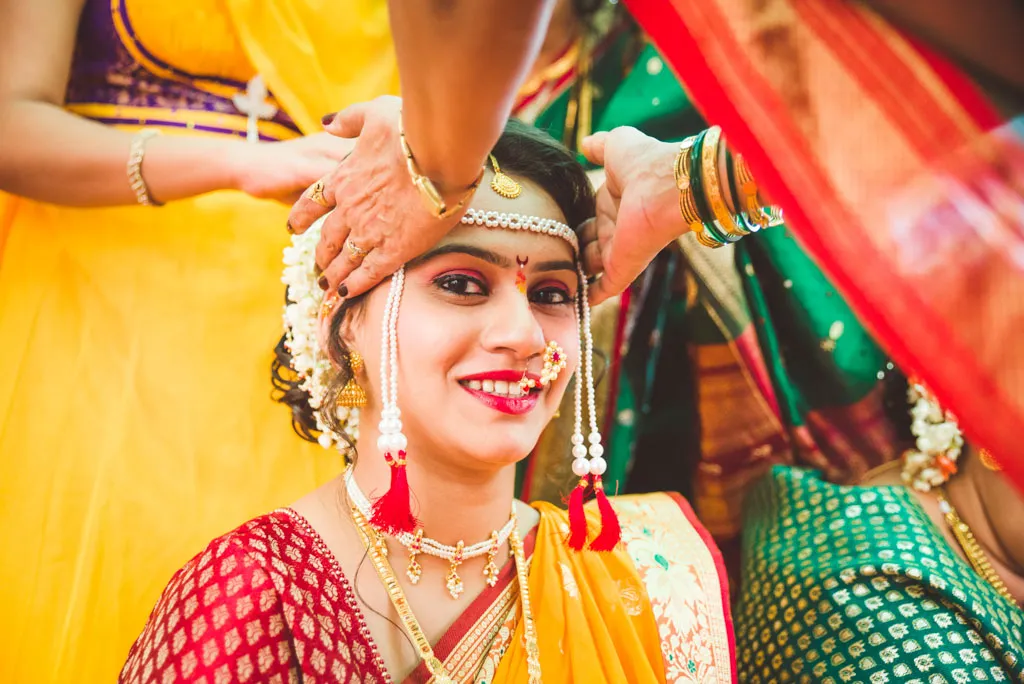
In this article, we will explore the fascinating world of Maharashtrian Wedding Pre-Wedding, Wedding, and Post-Wedding Customs, offering valuable insights and firsthand experiences that will enrich your understanding of this auspicious occasion.
Maharashtrian Wedding Customs
Maharashtrian Wedding Pre-Wedding Customs
Maharashtrian Wedding Customs commences with a series of captivating pre-wedding customs that pave the way for the grand wedding ceremony. These customs include:
Roka – The Sacred Alliance

The Roka ceremony marks the official announcement of the wedding alliance. Families of the bride and groom come together to exchange blessings and gifts, signifying their approval of the union. This joyous occasion is characterized by the exchange of rings, symbolizing the eternal bond between the couple.
Sakhar Puda – A Token of Sweetness
In the Sakhar Puda ceremony, the groom’s family presents the bride with a saree and a packet of sugar as a symbol of their acceptance and love. The sweetness of the sugar signifies the beginning of a joyful and harmonious relationship between the families.
Also Read | Top 10 Makeup Products for Brides and Bridesmaids.
Haldi – The Golden Glow

The Haldi ceremony is a joyous occasion where turmeric paste is applied to the bride and groom’s skin. Turmeric is believed to bring a natural glow and cleanse the body, preparing the couple for their big day.
Kelvan – Seeking Blessings
The Kelvan ceremony involves a special puja where the couple seeks blessings from the family deity. It is an intimate gathering of close relatives who offer their prayers for the couple’s happiness and prosperity.
Also Read | Effective Tips to Clean Wedding Jewelry and Rings
Mehndi – Artistry of Love

The Mehndi ceremony is a vibrant and artistic celebration where intricate henna designs are applied to the bride’s hands and feet. It symbolizes love, beauty, and the couple’s eternal bond.
Sangeet – A Night of Melodies
The Sangeet ceremony is an evening filled with music, dance, and celebration. Family and friends come together to perform traditional and modern dances, expressing their joy and excitement for the upcoming wedding.
The Maharashtrian wedding ceremony is a grand affair filled with age-old traditions and rituals that bind the couple in holy matrimony. Let’s delve into the enchanting customs that make a Maharashtrian wedding truly special:
Seemanpujan – Welcoming the Groom
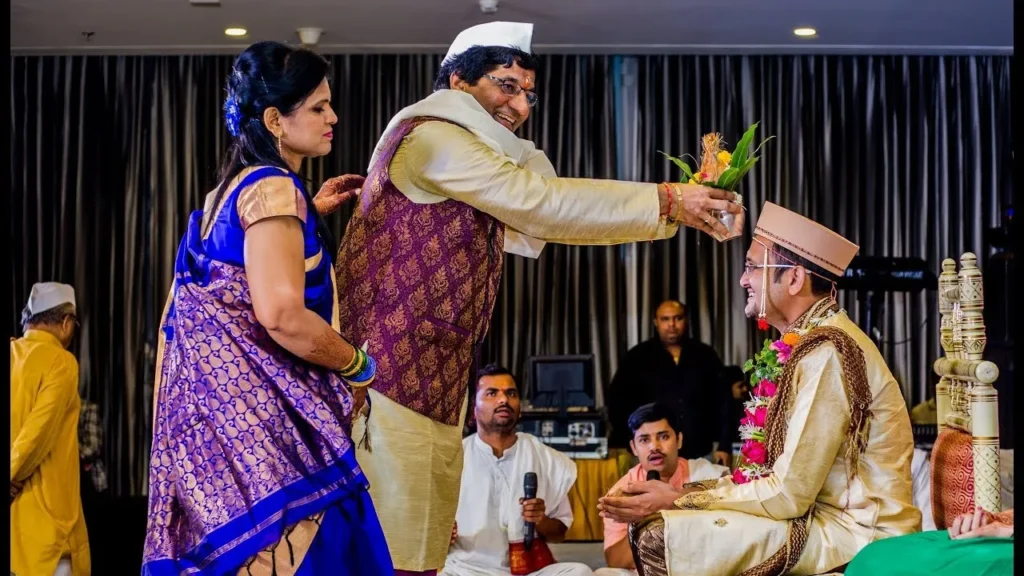
The Seemanpujan ceremony takes place at the entrance of the wedding venue, where the bride’s mother welcomes the groom by performing an aarti and applying a tilak on his forehead. This ritual signifies the groom’s formal acceptance into the bride’s family.
Antarpat – Veiling the Groom

During the Antarpat ceremony, a silk cloth is held between the bride and groom, separating them from each other’s sight. As Vedic mantras are chanted, the cloth is lowered, and the couple finally lays eyes on each other, ready to embark on their journey together.
Also Read | Top Wedding Makeup Trends For Bride and Bride Maids
Saptapadi – Seven Steps to Togetherness
The Saptapadi ceremony is the most significant ritual of a Maharashtrian wedding. The couple takes seven symbolic steps around the sacred fire, each step signifying a vow they make to uphold love, trust, and mutual respect in their married life.
Karmasampati – Seeking Ancestors’ Blessings

In the Karmasampati ritual, the couple seeks blessings from their ancestors and asks for their guidance and support in their married life.
Mangalsutra and Sindhur – The Sacred Symbols

The groom adorns the bride with a Mangalsutra, a sacred necklace symbolizing their marital bond. Additionally, he applies a red vermilion (Sindhur) to the bride’s hair parting, signifying her marital status.
Vidaai
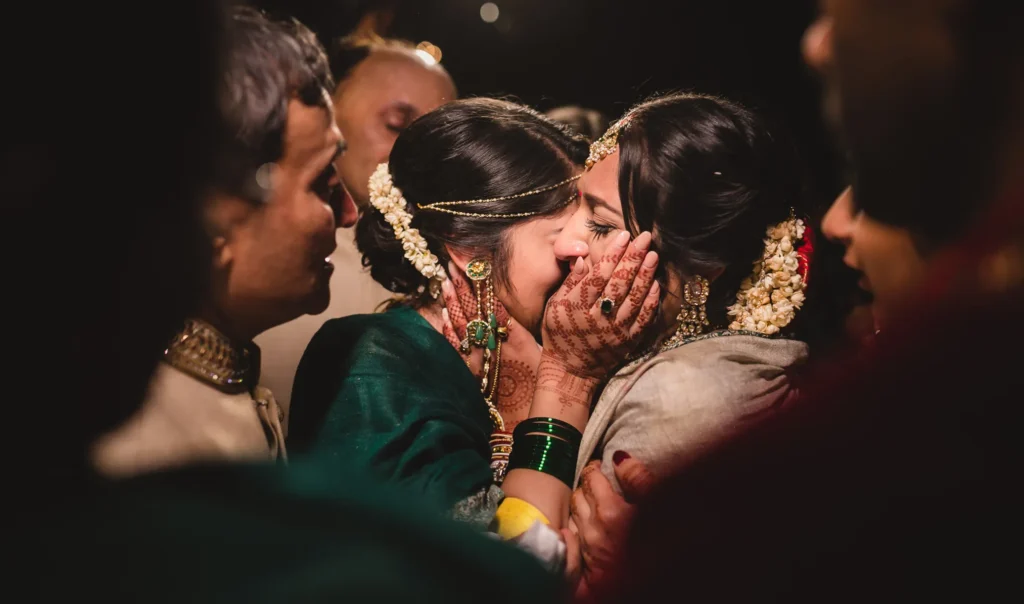
The Vidaai ceremony is a tearful farewell where the bride leaves her parental home to start a new life with her husband. It is an emotional moment for both families.
Also Read | Best Wedding Saree Trends for Brides-Mother.
Post Wedding Customs
After the wedding ceremony, Maharashtrian weddings continue with several delightful post-wedding customs that strengthen familial bonds and add joy to the couple’s new journey:
Grihapravesh – Stepping into a New Home
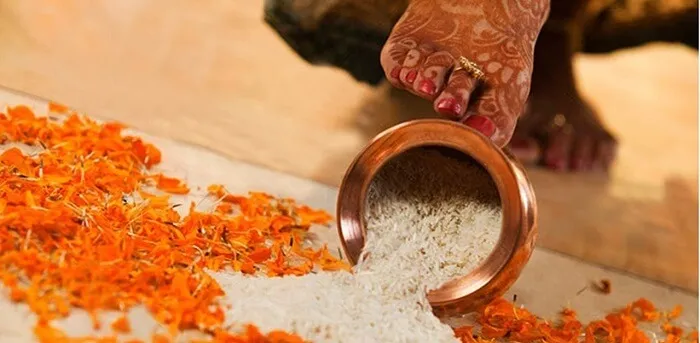
The Griha Pravesh ritual involves welcoming the bride formally into her new home. She is greeted with a traditional aarti and is expected to kick a vessel of rice before entering the house. This ritual is believed to bring prosperity and abundance to the household.
Mooh Dikhai – Uniting the Families
Mooh Dikhai is an endearing tradition where the bride reveals her face to her in-laws and seeks their blessings. She is given gifts and showered with love, symbolizing her acceptance into the new family.
Reception – Celebrating Love

The wedding reception is a grand celebration where extended family and friends join in the festivities. It is an opportunity to introduce the newlyweds to the extended community and shower them with love and blessings.
Aeki Beki – Fun and Games
Aeki Beki is a light-hearted post-wedding game that adds a touch of fun and laughter to the celebrations. The couple competes in a game where they try to find a ring hidden in a bowl of colored water and milk. The winner is believed to be the dominant partner in the marriage.
Conclusion
Maharashtrian Wedding Customs offers a delightful blend of tradition, love, and joy. Each ritual is steeped in cultural significance, making a Maharashtrian wedding a memorable and enriching experience for all involved.
FAQ
What is the significance of the Haldi ceremony in a Maharashtrian wedding?
The Haldi ceremony symbolizes purity and preparation of the couple for their wedding day. The application of turmeric paste is believed to bring a natural glow and cleanse the body.
How long does a typical Maharashtrian wedding ceremony last?
A traditional Maharashtrian wedding ceremony usually lasts for about 2 to 3 hours, but the entire wedding celebration can extend over several days, depending on the customs and traditions followed.
Is the Saptapadi ceremony common to all Indian weddings?
The Saptapadi ceremony, involving seven symbolic steps around the sacred fire, is a common feature in many Indian weddings, including Maharashtrian weddings.
What is the significance of the Mangalsutra in a Maharashtrian wedding?
The mangalsutra is a sacred necklace that symbolizes the marital bond between the bride and groom. It is believed to protect the couple’s relationship and ensure their well-being.


